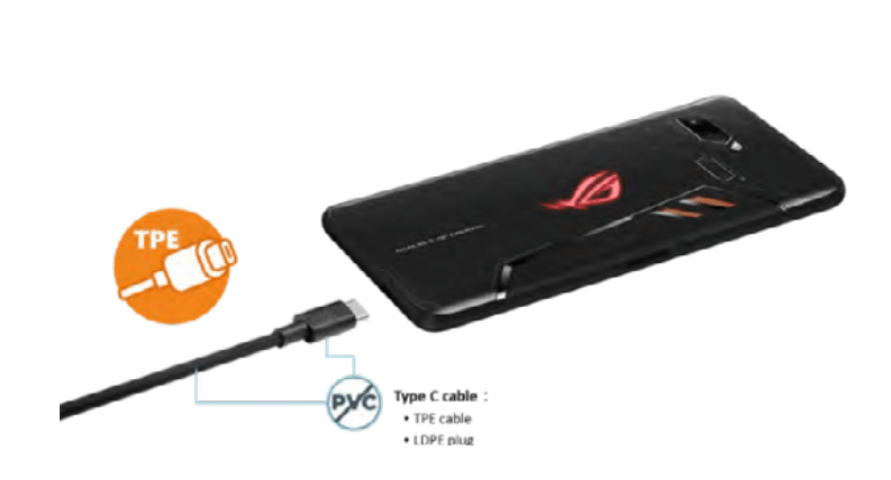Chemical Substance Management | Green Material Usage | Circular Economy | ASUS ESG website, ASUS ESG goal
Performance
89.6
%89.6% of parts comply with the "ASUS Halogen-Free Regulation"
0
Mineral OilNo mineral oil in packaging printing material
Safer Chemicals
More than 80% of environmental impacts in the product life cycle is determined in the design phase. We believe that integrating the concept of circular economy into the product design phase, introducing environmentally friendly design, and more active management on the use of chemicals in the production process can improve the recycling and reuse of products and substances.
Chemical Substance Management in Products
Numerous chemicals would be added to the product to ensure quality and safety. Along with advancing analysis on scientific hazards and risks, however, some chemicals that are currently approved or use may be determined as necessary to control in the future, which could interrupt the circularity of the products or components. The use of safer chemicals will help the circulation of resources and reduce environmental pollutions at the end of the product's life cycle, and create a safer disposal process to protect the personnel.
ASUS has introduced ISO 9001 Quality Management System since 1999, supplemented by IECQ QC 080000 Hazardous Substance Process Management System Requirements for chemical management. Through the third-party testing laboratory, the onsite audit performed by ASUS personnel, the audit and re-audit of the management system and else, the development of the entire product starts from a truly environmentally friendly design, and we are able to provide consumers with products that are safe for both the human body and the environment.
The ASUS Hazardous Substances Free (Hazardous Substances Free, HSF) standard has aligned with RoHS (Restriction of Hazardous Substances Directive) since 2002, and it also proactively takes the stringent regulations into consideration to include substances such as beryllium, antimony and red phosphorus. After several revisions, the standard goes far beyond the international regulations and also covers IEC 624741 Material Declaration Standard.
ASUS also cares about whether the materials or auxiliaries used in the manufacturing process might cause potential danger to the production line workers and the environment. ASUS controls the use of benzene and n-hexane in the cleaning and decontamination solutions in the manufacturing process. We has gradually introduced low-VOCs (Volatile Organic Compounds) raw materials such as paint and ink since 2020 and continues to ban all substances in the U.S. Toxic Substance Control Act (TSCA) for the purpose of reducing the factors in manufacturing processes that are likely to affect the human body or indirectly cause environmental hazards.
We have adopted big data management since 2021, and identify the risk of hazardous substances using Full Material Disclosure (FMD) inventory to predict trends and assess the risks of substances, components, and materials to improve audit quality and management efficiency.
Please click HERE for the case study of the FMD analysis of critical minerals and rare earth metals.

Halogen-Free
It has been confirmed internationally that halogen flame retardants will produce extremely toxic dioxin, which is harmful to the environment and human health, if improperly recycled and processed, and the parts containing halogen.
Since 2010, ASUS has adopted a halogen-free policy, and in 2022, 89.6% of the products shipped in compliance with the "ASUS Halogen-Free Regulation". And we continue to advance toward higher goals.
- Banned the use of chlorine in the bleaching process for paper packaging since 2018.
- Transitioned to halogen-free hard drives and batteries since 2019.
- Phased out PVC in the Type-C charging cables for the next-generation mobile communication products since 2020.
- Use halogen-free PCB substrate since 2021
Management of Packaging Materials
With regard to the packaging materials that come into direct contact with consumers, we require them to meet the EU Directive 94/62/EC on packaging and packaging waste (PPWD).
ASUS actively manages current and future international standards for hazardous substances and reduces the environmental hazardous factors that come in direct contact with humans .
- Gradually introduced low-VOCs (Volatile Organic Compounds) raw materials in paint and ink since 2020.
- Suppliers are required not to use mineral oil as printing raw materials, further controled the use of plasticizers (Phthalates), and banned to PVC materials since 2021.
- Phase-out of the use of PAHs (Polycyclic Aromatic Hydrocarbons) since 2023.

Chemical substance management in manufacturing
In addition to controlling harmful substances in products, Asus is also concerned about whether the materials or auxiliary solvents used in the product manufacturing process pose hidden hazards to production line personnel and the environment. ASUS not only controls the use of benzene and n-hexane as solvents for cleaning and decontamination in the manufacturing process, but also refers to the Responsible Business Alliance (RBA) to create a list of managed process chemical substances. Through appropriate management measures and regular on-site audits, ASUS can control process chemicals that might be harmful to human health or the environment to fulfill corporate responsibility.


